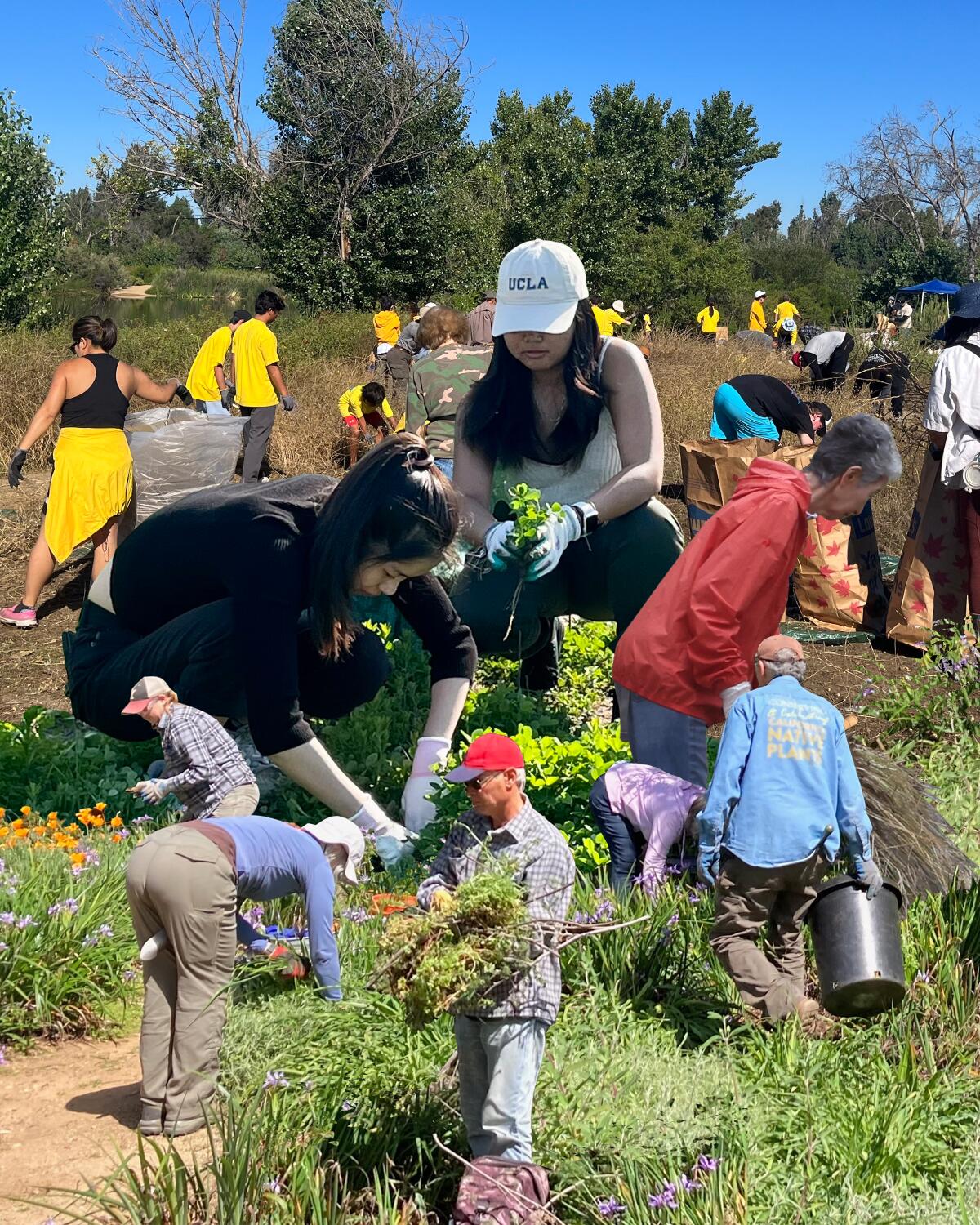
18 ways to learn about plants while volunteering around L.A.
- Share via
While hiking in the foothills of the San Gabriel Mountains as a kid, I’d be poked by yucca spikes, scratched by the tough leaves of oak trees and calmed by the soothing aroma of sages.
Back then, I knew very little about these native plants — not even their names. Even though my mom was a gardener who’d take me to visit local nurseries, my understanding of plants didn’t go very deep. Like many of us, I assumed that lush green lawns and tall, limber palm trees were the signature plant life of Los Angeles. Volunteering as an adult has changed that.
When I first went to visit the nursery at the Theodore Payne Foundation in Sun Valley, I remember being captivated by the little Joshua Tree sprouts they were selling in tiny 4-inch pots — these are plants that have been in our local Mojave Desert for over tens of thousands of years. I signed up to volunteer there because I had a feeling that these plants were part of the profound story of this place. I wanted to know more.
The first volunteer day I attended was a group cleanup session of the grounds, which feels more like a nature park than most nurseries. There are billowing buckwheats, dramatically sculptured manzanitas, as well as sages and a big palo verde tree with its long green spreading limbs. The plants attract butterflies, bees, birds and other critters. It was easy to spend time there.
Planning your weekend?
Stay up to date on the best things to do, see and eat in L.A.
We got to work doing chores around the nursery, pulling weeds and raking leaf litter away from shrubs. Chitchat among the 15 volunteers ensued, piles of weeds formed. We were working as a team, with people taking the lead or following along as necessary, some carrying the weight and others providing encouragement. We probably worked for the better part of three hours, but it didn’t seem like it.
I didn’t realize it at the time, but I was experiencing the seeds of many revelations. I began to notice how even the simplest tasks such as pulling weeds can be a meditation. Working outside with plants is not only relaxing, but it makes you more aware of life in many ways. Being part of a group effort showed me how much a few people working toward the same goal could accomplish in a short amount of time.
Sign up for our L.A. Times Plants newsletter
At the start of each month, get a roundup of upcoming plant-related activities and events in Southern California, along with links to tips and articles you may have missed.
You may occasionally receive promotional content from the Los Angeles Times.
Pretty soon I was helping customers in the sales yard, doing things like checkout and carting plants out to cars. I got to work with the point-of-sale computers, entering in the items people had purchased, and this helped me learn many of the plant names, both the common and the scientific ones. I started to recognize plants and pick up basic identification skills.
The sales yard staff is constantly talking to shoppers. Sometimes they’re talking to professionals, but often to complete beginners about native plants, or even regarding gardening in general. I got to witness and be a part of these conversations, which helped me learn a lot fairly quickly. I was becoming part of a larger conversation about the plants that reflect the story of California.
Since that first time at Theodore Payne, I’ve volunteered with a handful of other plant-related organizations, including the California Native Plant Society, Friends of Griffith Park and Arlington Garden in Pasadena, where I now work. At Arlington Garden, a big part of my job is working with volunteers.
California native plants have many pros, but their potent scents are the biggest draw of all. Gardening experts share the most fragrant native plants.
The other day I helped lead a group of college students volunteering at Arlington Garden, pulling weeds and turning them into compost. Now I get to see others experience the benefits of volunteering with plants – something I would never have imagined that day I was delighted by the tiny Joshua Trees.
Almost every weekend you can find volunteering opportunities at plant spaces around Southern California. Use this guide to get started. When you sign up to volunteer, confirm the event address with the organization. Events may take place beyond the sites marked on the map. — William Hallstrom
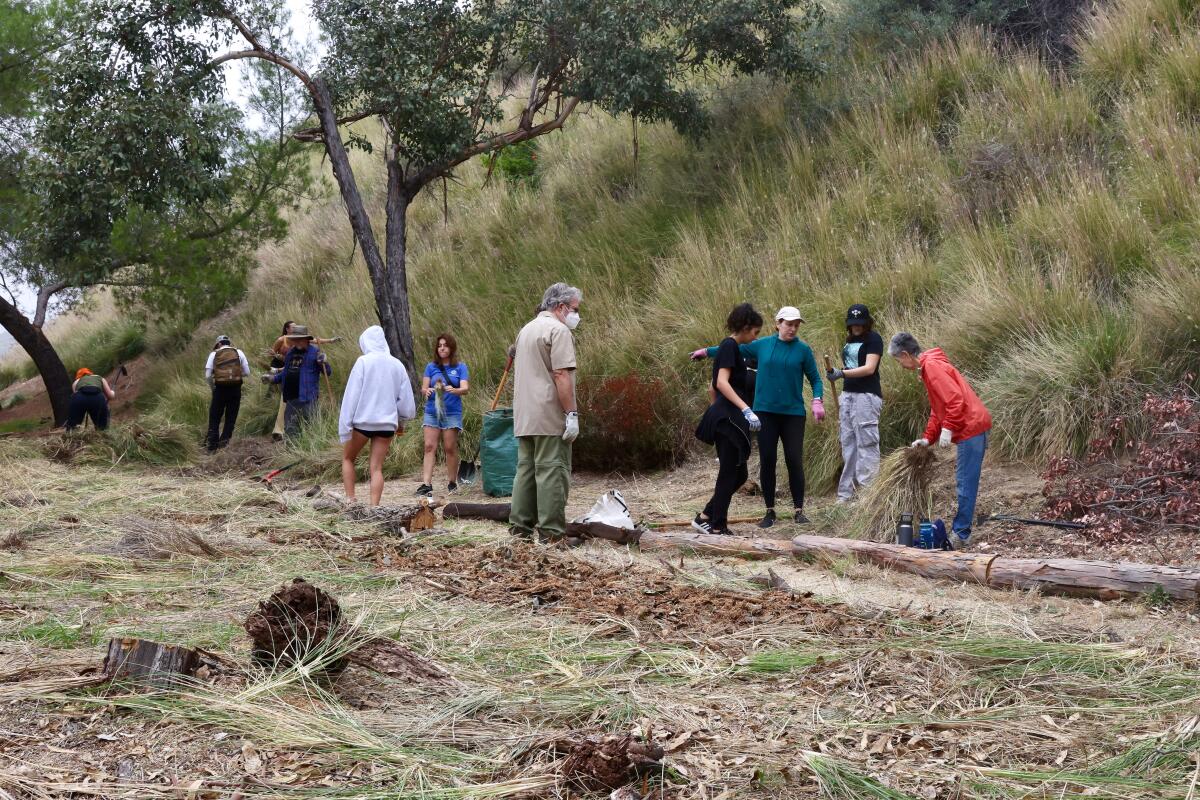
Arroyos & Foothills Conservancy
But with only a small staff, it depends on volunteers to maintain these sites, and a key part of the work is establishing local involvement to help projects have long-term success. The group hosts volunteer events almost every week, including habitat restoration and trail maintenance. This could mean weeding out unwanted invasive plants like fountain grass or mustard, spreading mulch to suppress weeds and putting in native plants. Arroyos & Foothills Conservancy also offers opportunities to help with wildlife cameras or to learn about leading educational field trips with students at the conservancy’s sites.
Volunteer events occur at various locations. The address listed is the site with the most frequent events.
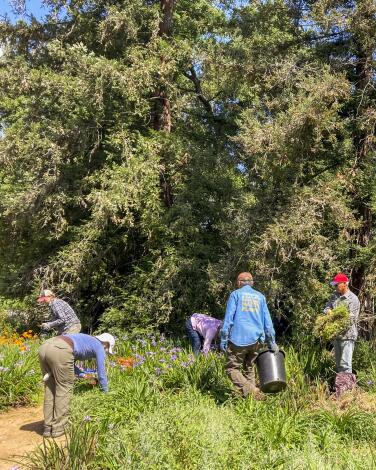
California Botanic Garden
It is one of the primary hubs in Southern California for native plant horticulture in the practical garden sense, but also for academic research, so there is a lot of knowledge to be found there. Volunteers can participate in any of these areas of the garden. The botanic garden is a large institution with volunteering opportunities in many areas, such as being a docent, mounting plant specimens in the herbarium, weeding and pruning in the gardens or maintaining flower arrangements. There are daily volunteer opportunities.
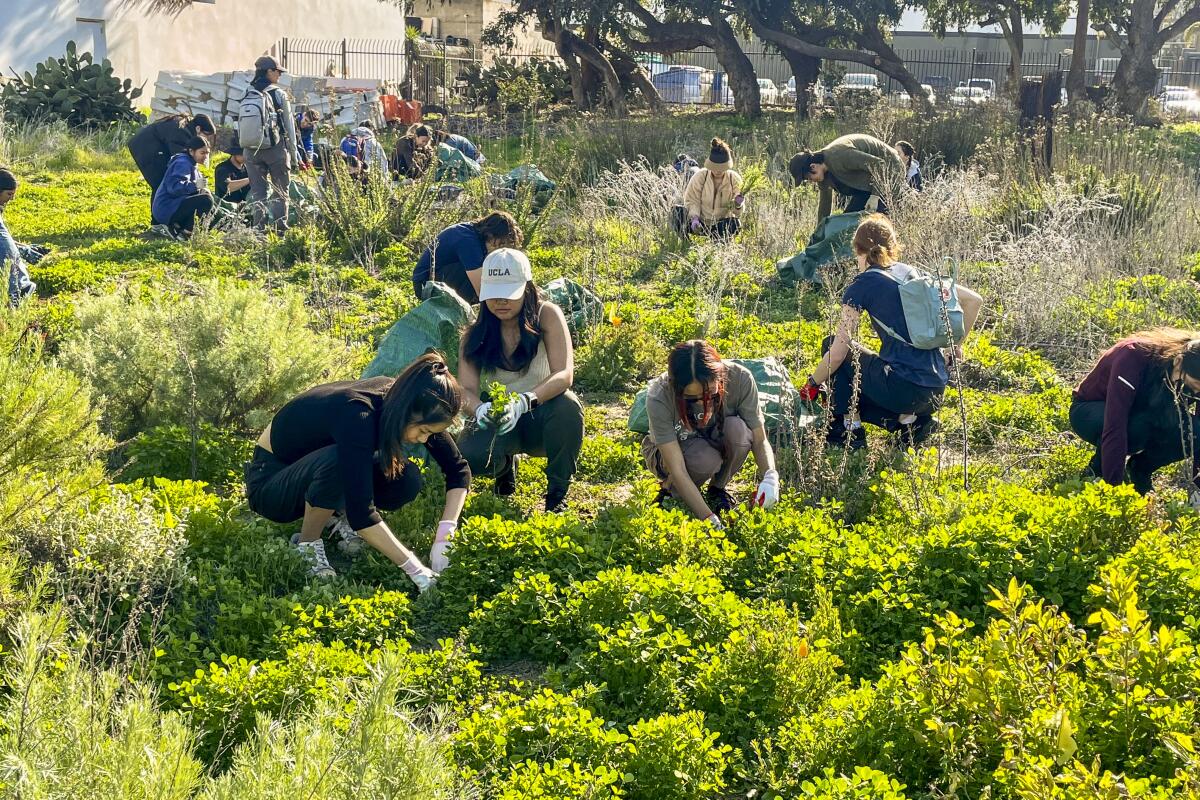
Friends of Ballona Wetlands
The Friends of Ballona Wetlands hosts multiple volunteer opportunities every month including cleanup and restoration events. Volunteers can expect to help with removing non-native vegetation, planting trees and shrubs and removing trash. With a staff of eight people, Friends of Ballona depends on volunteers to achieve its goals.
Volunteer events occur at various locations. The address listed is the main one for the wetlands.
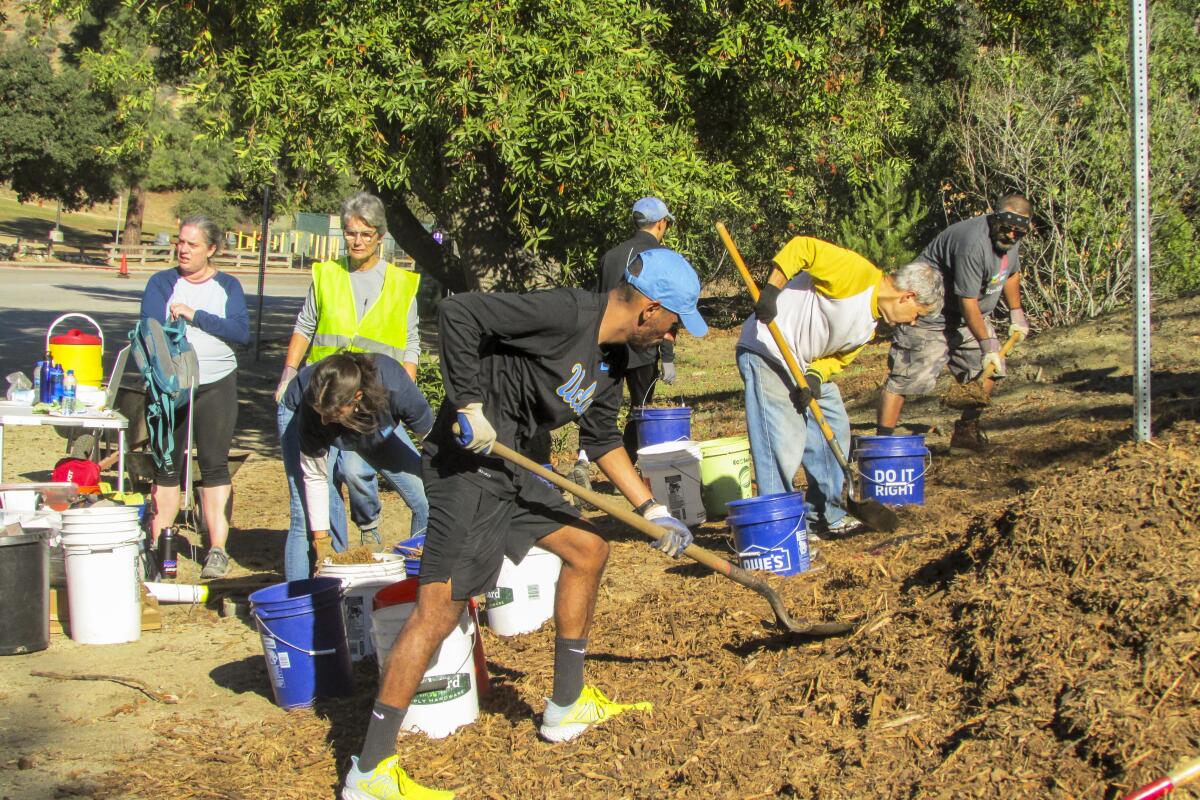
Friends of Griffith Park
The Friends of Griffith Park is helping to maintain this vision. Brenda Rees, a veteran volunteer with the group, says volunteer events are joyful and inclusive. She says volunteers “love to be at events like this because we get our hands dirty, feel the breezes and maybe hear the chortling quail or howling coyotes.” The group hosts a few big volunteer days every month that typically involve cleanup around trails, removing invasive plants and restoring habitat areas.
Volunteer events occur at various locations within Griffith Park.
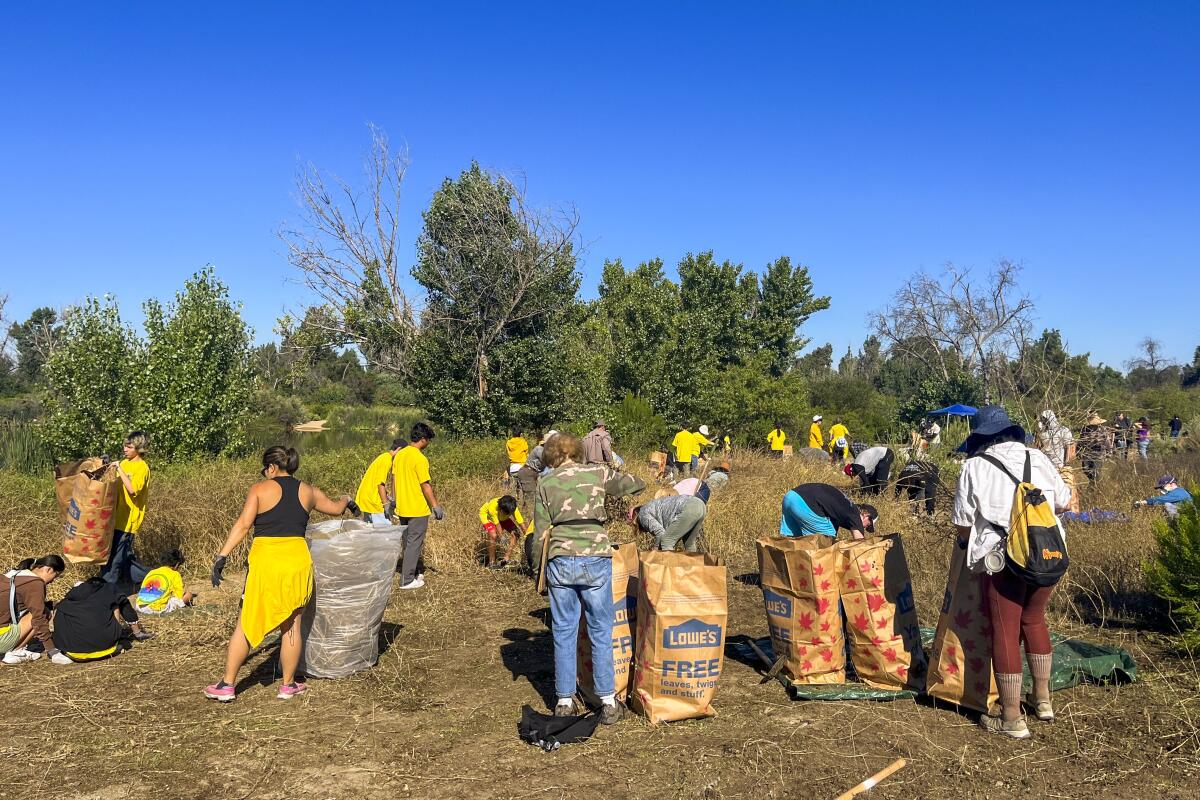
Friends of the L.A. River
Volunteer events occur at various locations. The address listed is for the group’s main office.
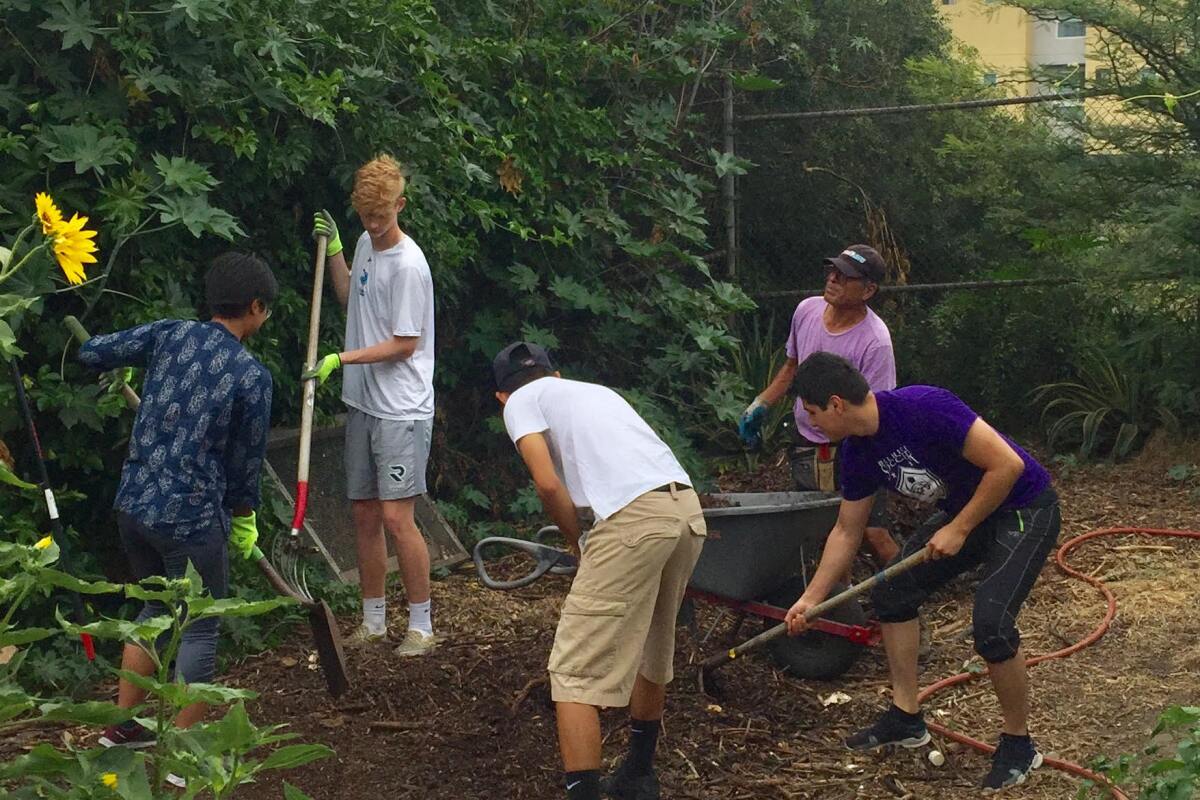
Grow Good
You can sign up for two-hour shifts at 9 a.m. Wednesdays and Saturdays online. Children 12 and older are welcome if accompanied by an adult.
Grow Good provides gloves and tools, but bring a hat, sunscreen and water bottle as there is little shade.
When you’re done, head to Aqui Es Texcoco around the corner for lamb barbacoa. You’ll be dirty, but they won’t mind.
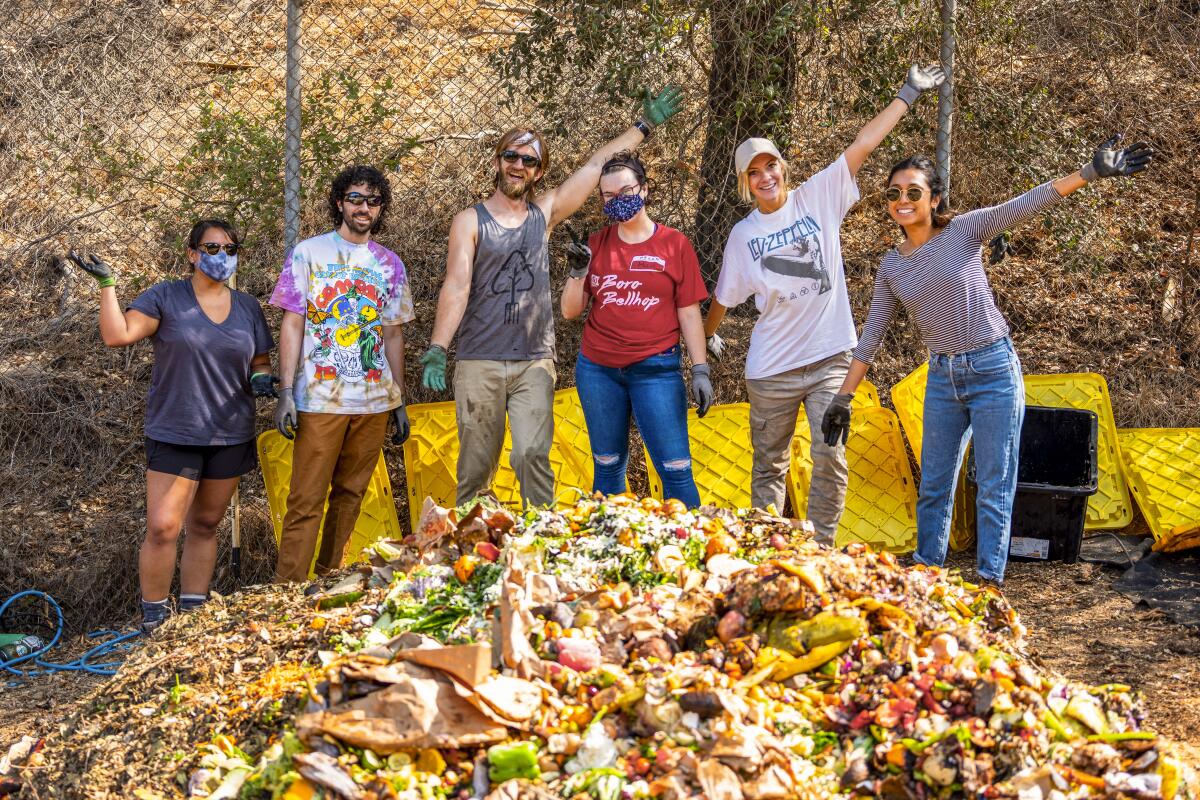
LA Compost
Address provided once you sign up for a volunteering event.
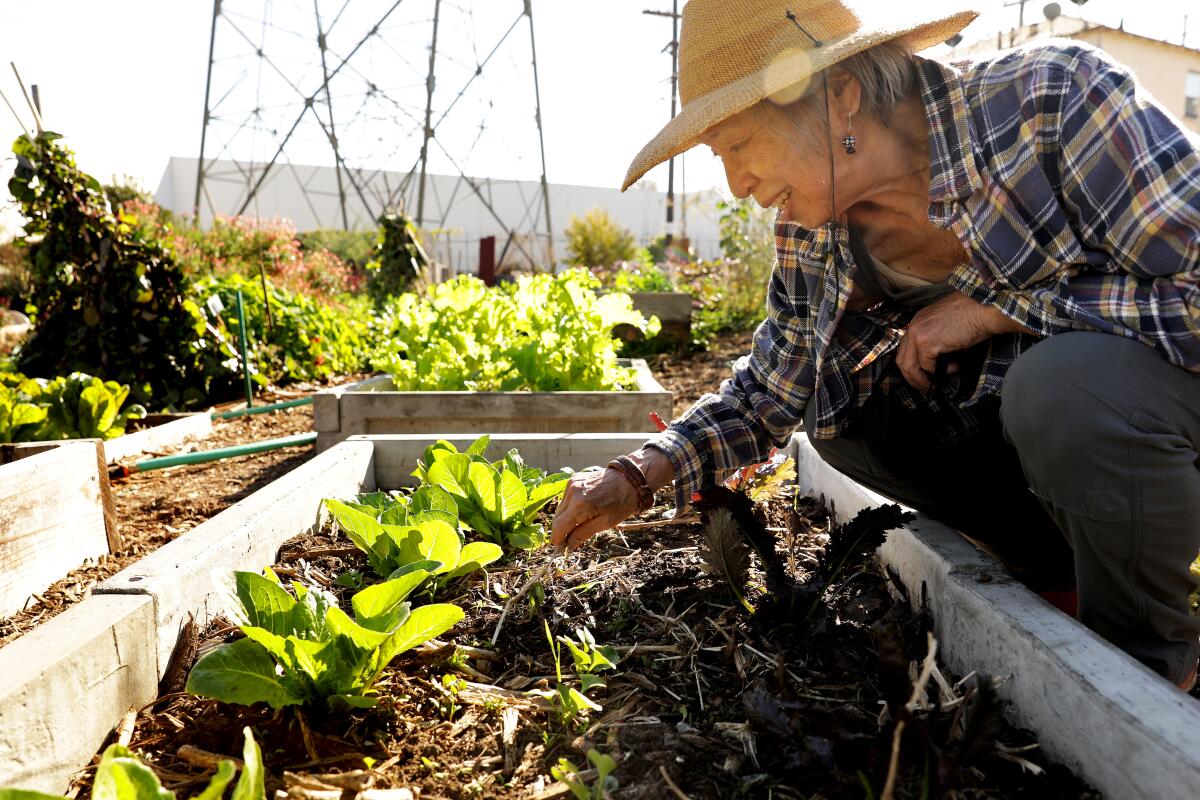
LA Green Grounds
In addition to her teaching duties, Nishida and the volunteers at Green Grounds are the driving force behind “Dig-Ins,” community-driven workdays where volunteers, neighbors and family friends transform front yards and parkways into edible gardens. Garden applicants must live in South L.A., and the garden must be visible to the public as a way to inspire and encourage others.
You can sign up to help tend L.A. Green Gardens’ Teaching Garden in South Los Angeles on Tuesday or Saturday mornings once a week for three months.
The teaching garden is located at the point where Carmona Avenue and Boden Street come together (the closest big cross streets are Jefferson and La Cienega boulevards). The garden is adjacent but not part of the Good Earth Community Garden on the west end.
Dig-ins are held from 9:30 a.m. to 3:30 p.m. Saturdays and are open to families. Garden tools, water and lunch are provided. By signing up to volunteer, you’ll receive notifications two weeks before every Dig-in event. Please make sure to RSVP right away as Dig-ins fill up quickly. After you RSVP, you will get the details you need about the event.
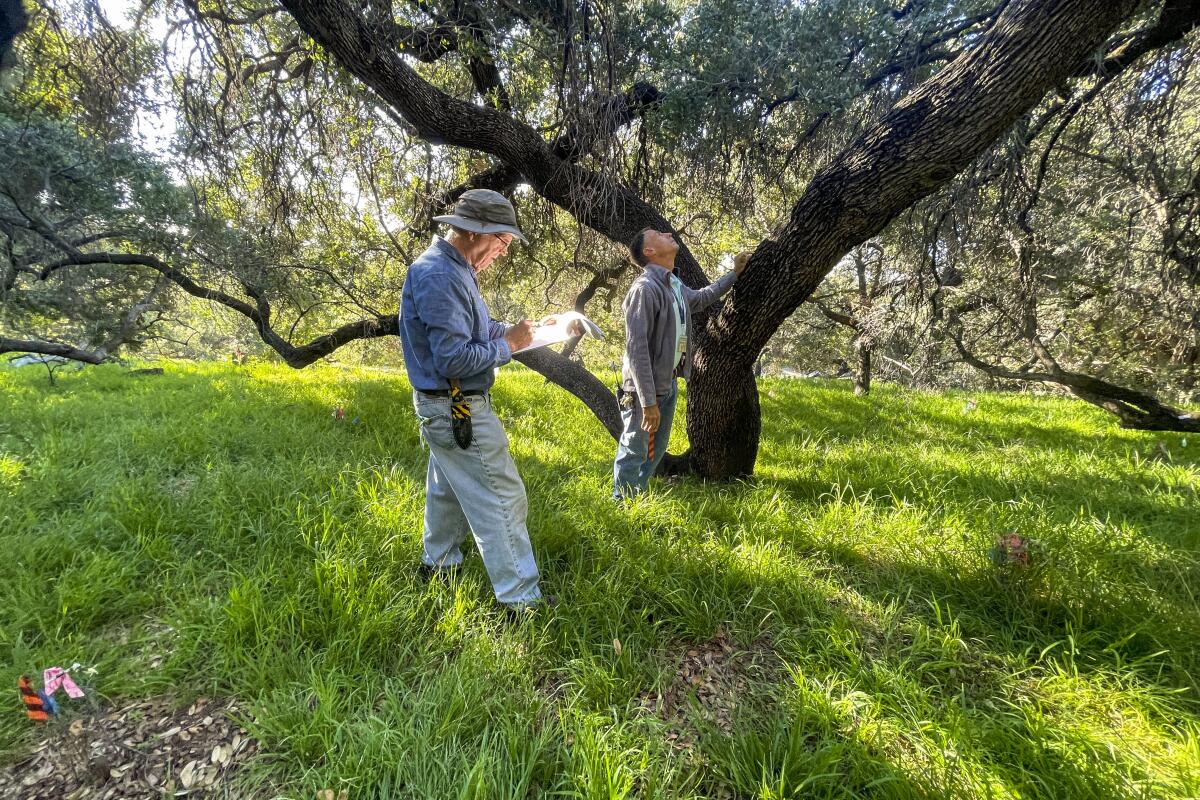
Los Angeles County Arboretum and Botanic Garden
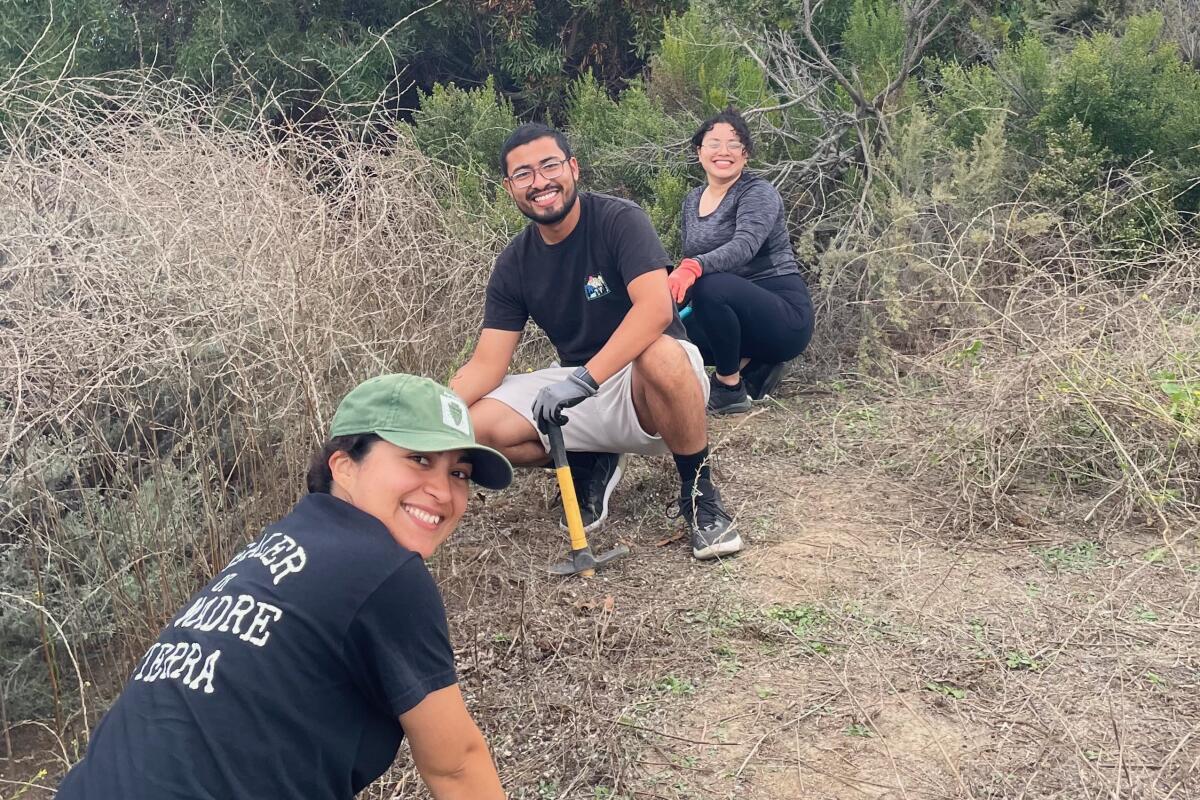
Mujeres de la Tierra
Over the summer, the group led four volunteer projects at Kenneth Hahn State Recreation Area where participants removed invasive weeds and planted California native plants. Volunteers can expect to enrich their environmental knowledge and take on leadership roles.
Volunteer events take place at multiple sites. The address listed is for Mujeres de la Tierra’s office.
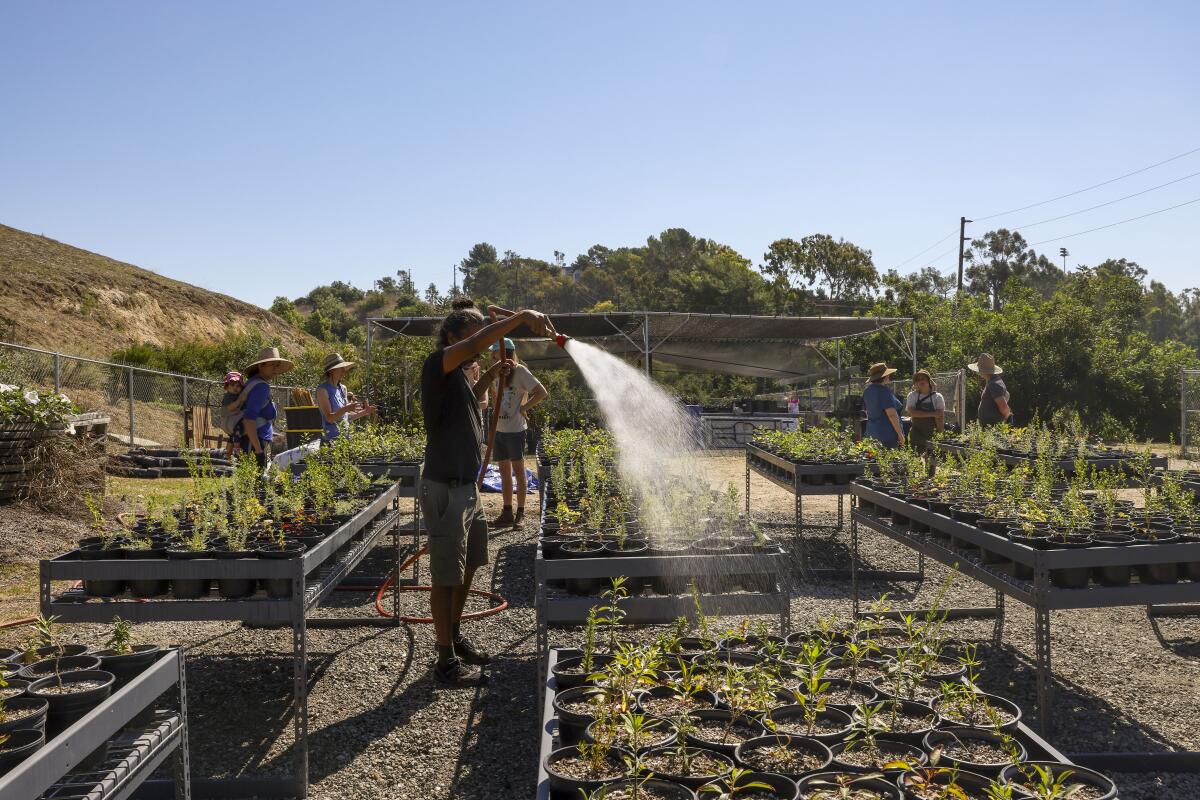
North East Trees
The group restores and maintains a number of sites around Northeast Los Angeles, including at Ascot Hills Park, where its nursery is based, and the nearby Elephant Hill and Flat Top sites. North East Trees is very much a part of its community. Nursery Manager Hannya Ortiz Caldera grew up in nearby Lincoln Heights, and she says that local community involvement is “present and consistent.” She says many volunteers have made the North East Trees nursery their hangout spot and a place where they can decompress — some even find ways to help on their own time once they learn the basics.
Volunteer activities include seed collecting, seed processing and other nursery propagation tasks, as well as habitat restoration work and putting plants in the ground. North East Trees is developing a native plant micro-forest at Ascot Hills Park, a project involving a number of aspects of habitat restoration, which volunteers can learn about. North East Trees also helps local youth acquire skills to gain employment in green jobs. It promotes volunteer opportunities with other local organizations through its website as well.
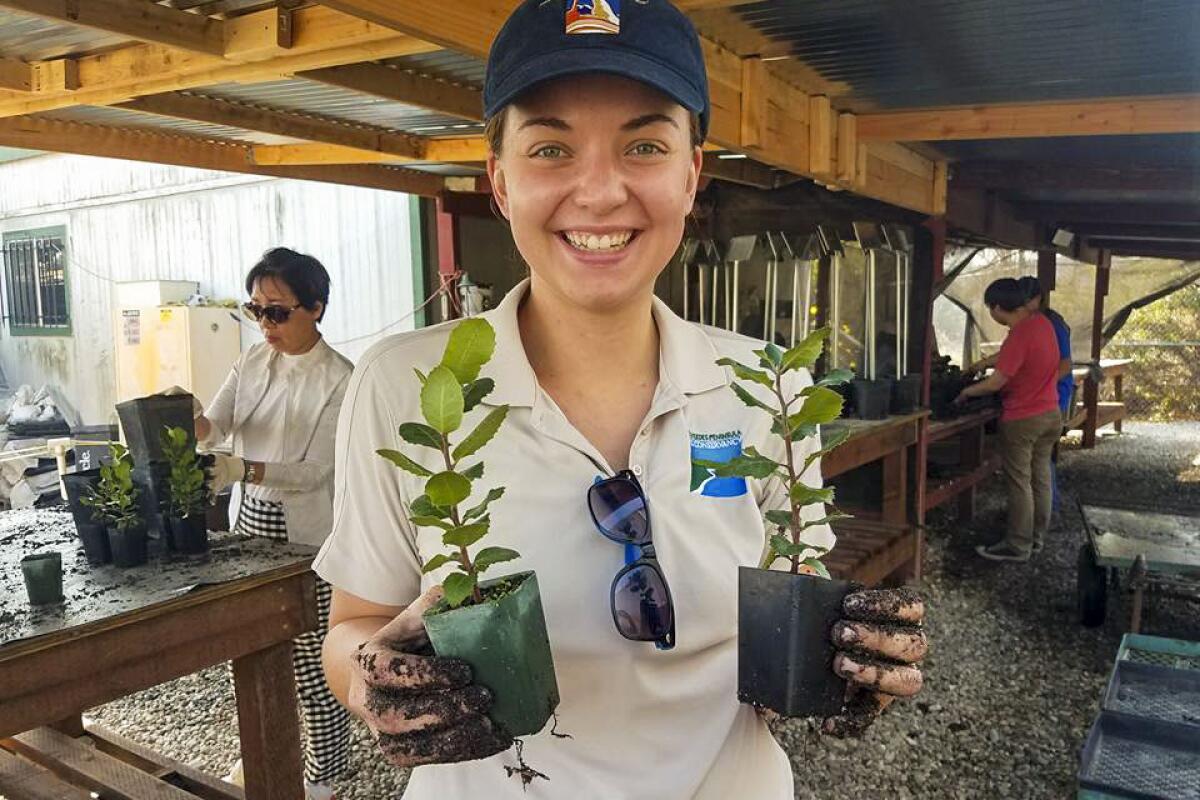
Palos Verdes Peninsula Land Conservancy
The Palos Verdes Peninsula Land Conservancy has worked since 1988 to preserve the history and ecology of open spaces in the area, and it now counts 1,600 acres under its stewardship. Volunteer program manager Lynn Rotunno says she is “inspired every day by our volunteers and their commitment to us.” First-timers can come out for weekly restoration and trail maintenance events. There are also opportunities for growing plants in the nursery and wildlife monitoring. Hikers who frequent the area can learn how to report trail damage so repairs can be made.
Volunteer events occur at various locations. The address listed is for the conservancy’s main site.
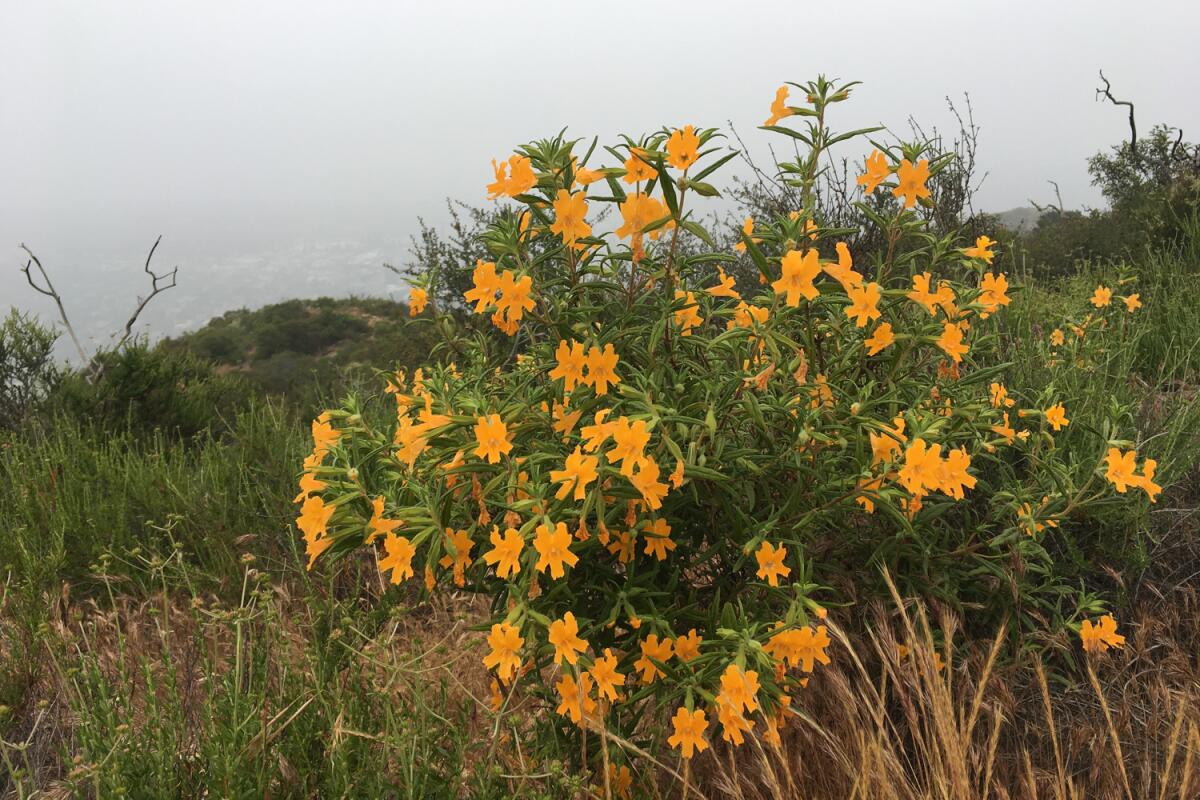
Santa Monica Mountains Fund Rancho Sierra Vista Native Plant Nursery
Bonus point: If you put in at least two hours of work between noon and 4 p.m. on Free Plant Thursdays, you can take home three plants for free. Propagation Thursdays from 9 a.m. to noon are best suited for volunteers who want to improve their native plant horticulture skills. The tasks focus on one or two native plant species every week, such as milkweed, sages, manzanitas, dudleyas and monkeyflowers, with activities such as preparing plant cuttings, transplanting rooted cuttings into containers, creating and applying soil mixes and fertilizers and cleaning recent conservation seed collections.
The nursery also offers free workshops on a variety of plant topics, so sign up for its newsletter to find out about upcoming events.
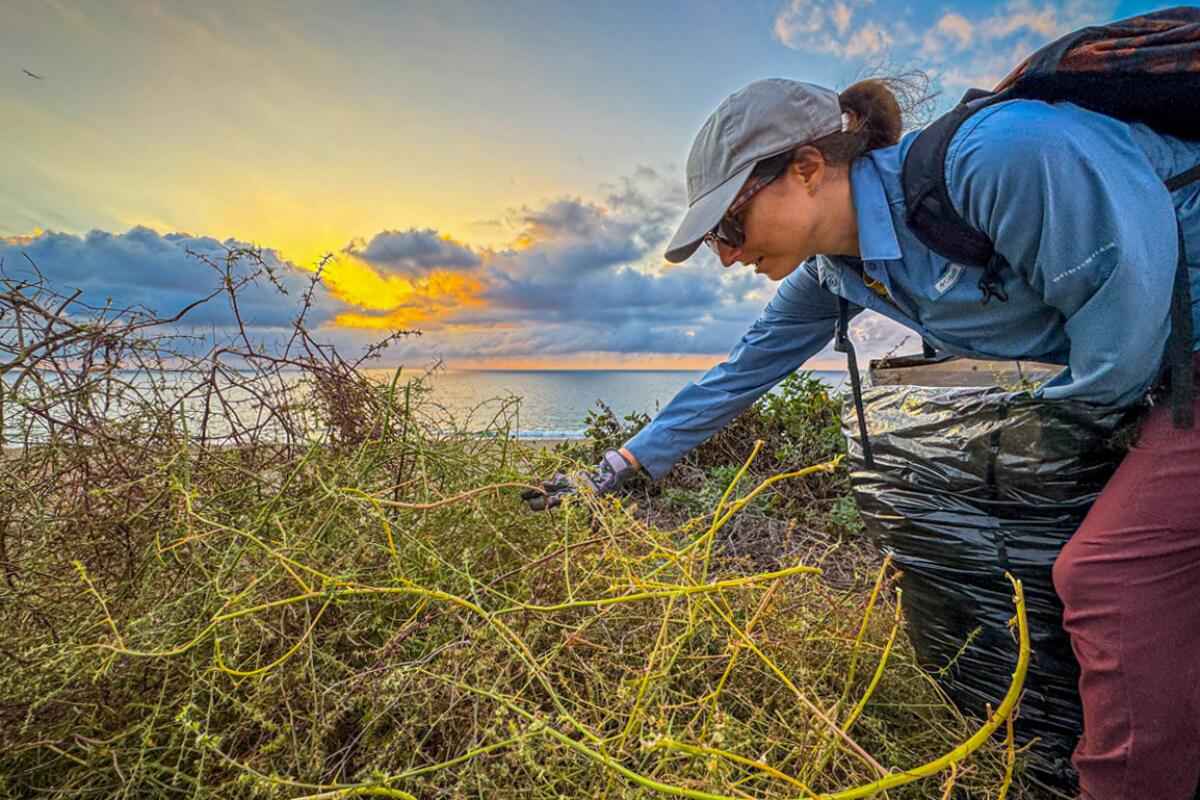
South Bay Parkland Conservancy
The conservancy has regular workshops that are monthly opportunities for volunteers to learn about native plants, wildlife and gardening while helping to restore and maintain sites such as the Esplanade Bluff, Hermosa Valley Greenbelt, Hopkins Wilderness Park and Redondo Beach Community Garden. The conservancy also offers guided nature walks in Hopkins Wilderness Park every month for children and adults discussing topics such as birds, pollinators and plant reproduction. Even its website is a revelation, with beautiful photos and names of plants native to the region.
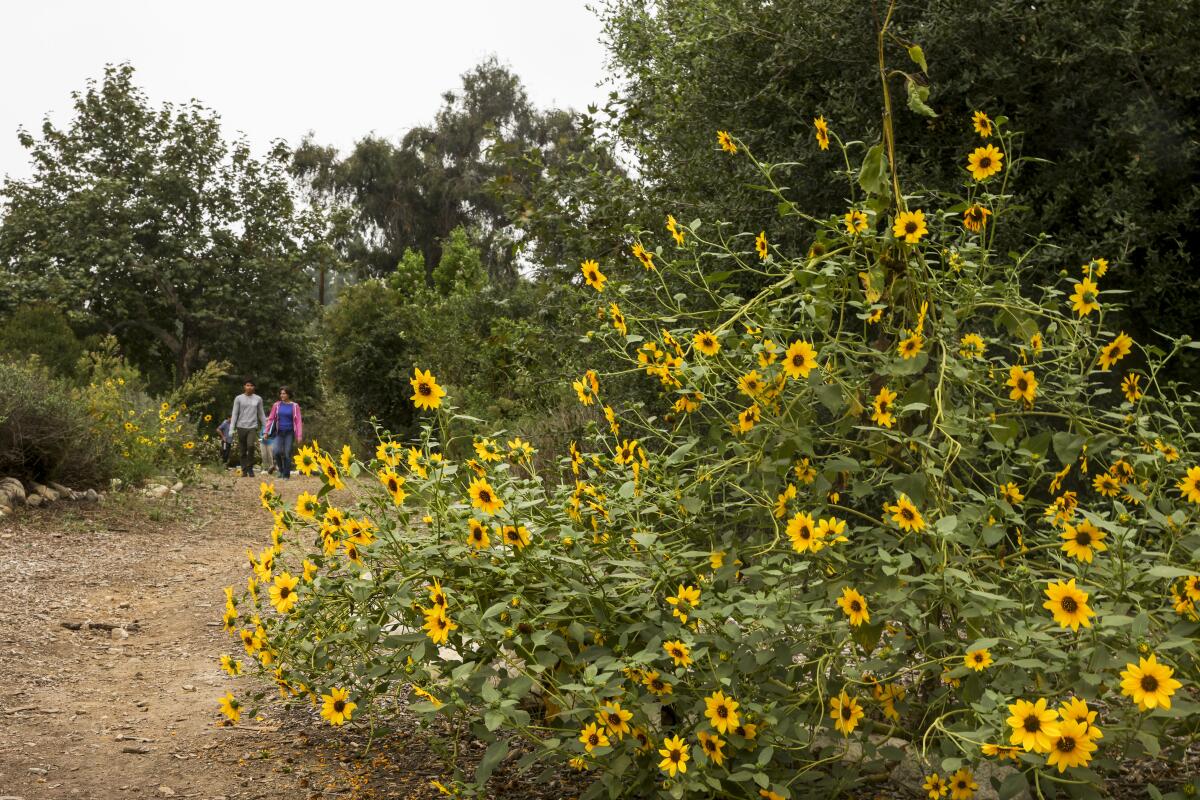
South Pasadena Nature Park
Volunteer days happen once a month. Cleanup, weeding, pruning and mulching are typical activities, but participants may also clear trails or engage in other special projects. Eisenstein says volunteers may have unique skills they can contribute. For example, volunteer Monica Kelly grows milkweed at home and started a butterfly garden at the nature park. She also educates visitors on the importance of milkweed for the monarch butterfly. Community is key at the South Pasadena Nature Park and it is likely something volunteers will learn how to foster.

Theodore Payne Foundation
The staff and community at Theodore Payne are incredibly knowledgeable when it comes to gardening with native plants in Los Angeles, so it is a great educational opportunity. It has regularly occurring volunteer days every week, as well as bigger project events that occur from month to month. One of the most intriguing aspects of the nursery is that it is situated within a lovely native plant showcase garden.
Volunteers can expect to help out with typical garden chores such as weeding or planting, but there are also opportunities to learn about things specific to the plant nursery, such as collecting seeds or propagating plants. Theodore Payne also partners with other organizations for volunteer days at sites like the Rio de Los Angeles State Park and the Audubon Center at Debs Park.
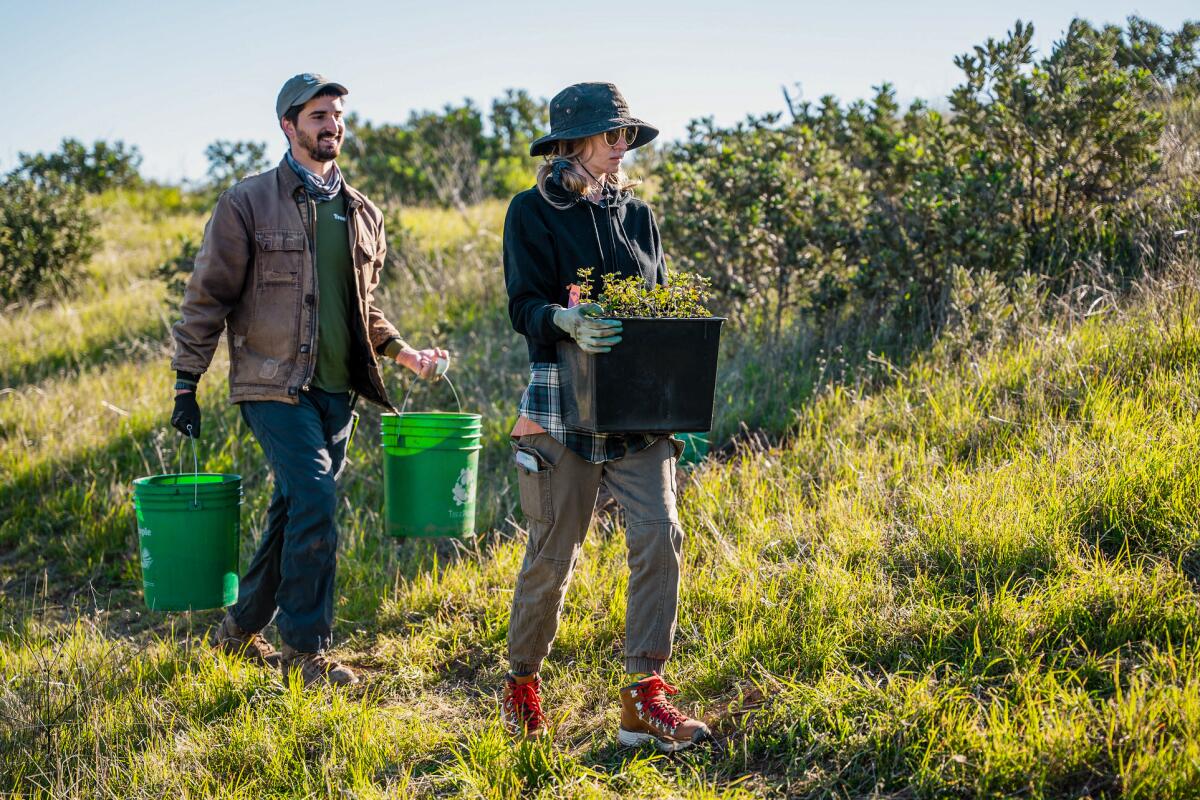
TreePeople
Education is another focus, with periodic workshops and online information about conservation and helping the environment. For instance, check out its concise “8 Principles to Rainwater Harvesting” on Instagram and its new downloadable starter guide, “Southern California Native Plants.” You can also visit its headquarters at the 45-acre Coldwater Canyon Park for hiking, picnicking or guided tours.
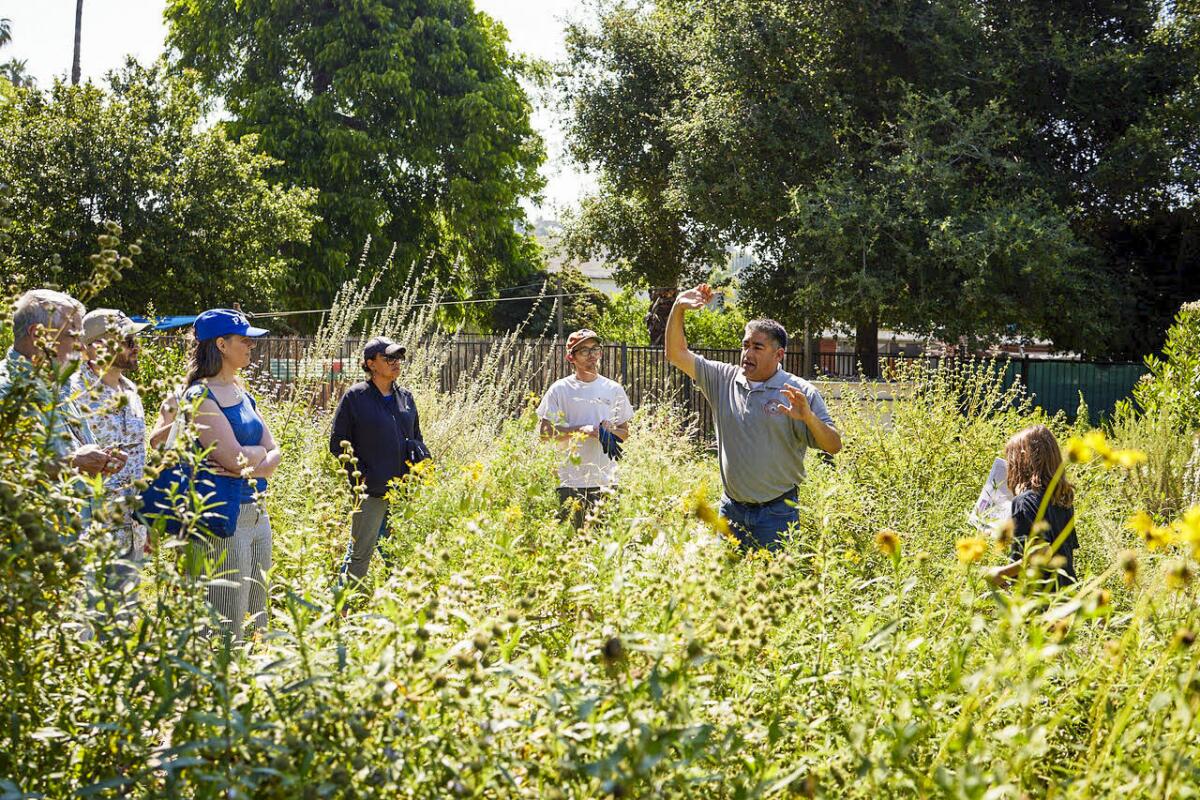
Wild Yards Project
Most recently he worked with volunteers to create a garden at Toland Way School in Glassell Park, where participants, including 35 volunteers, cleared an 1,800-square-foot lot, covered it with mulch and planted 200 native plants. Newsom’s projects happen from month to month; you can stay tuned by following him on Instagram.
Sign up for The Wild
We’ll help you find the best places to hike, bike and run, as well as the perfect silent spots for meditation and yoga.
You may occasionally receive promotional content from the Los Angeles Times.







